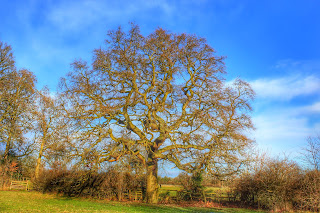Trees are the amazing giants that surround us.
They existed on this plant before the times of the dinosaurs and have merged into human folklore and mysticism over time.
Science now tells us that trees are sociable, live in families and have ways to communicate and protect each other.
They can be ancient living for over a thousand years. They change with the seasons, provide food, are homes for many creatures and are one of our most valuable industrial resources.
They are critical to the planet, they take carbon dioxide and give out oxygen keeping the planet healthy.
The Forest School and wider grounds have many trees connecting us with past uses of the site. The oldest trees are about 200 years old and remind us of the time they stood in the grounds of Gilbertstone House which stretched all the way down to where Birmingham International Airport currently can be found. Others tell of when the school was opened or the school eco days and more recently planting of saplings from the Woodland Trust.
So why not begin to find out about the history of the trees in your garden or local street or park.
To find out how old a tree is you can count the rings but this has the problem of having to cut the tree down.
There is an easier way fortunately. All you need is a long piece of string and a tape measure or if you have one a flexible tape measure.
Measure around the tree trunk about 1.4m above the ground. Next decide where your tree is. If in a wooded area divide your number by 1.25. If it is in open space divide by 2.5. the answer gives you an approximate age for the tree.
So if you find a tree in open space and the measurement round the trunk is 350 cm 350÷2.5=140 years old.
See here for help sheet
Why not make a timeline for your tree can you find key historical events that have happened during the life of your tree. Was it in your garden when your house was built? Did it see the first person walk on the moon? Was it alive in the time of Queen Victoria?
If you want help to identify what type of tree you are looking at see this sheet or this poster.
Please note this activity is for deciduous trees - those that lose their leaves in winter.
Acknowledgements: The Hidden Life of Trees by Peter Wohlleben, Tree from seed to mighty forest David Burnie, Photos from Walking in Paradise Photography.






No comments:
Post a Comment